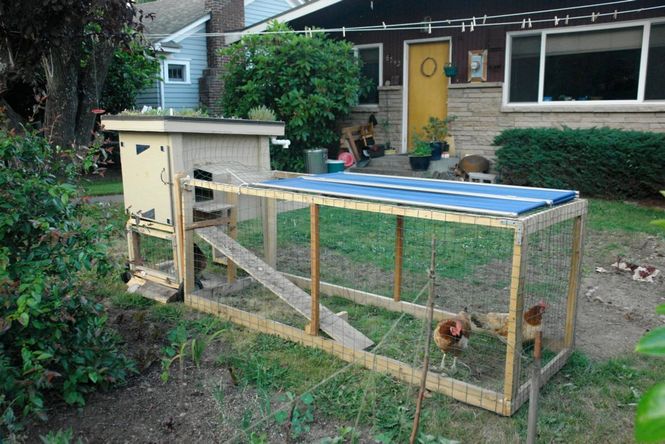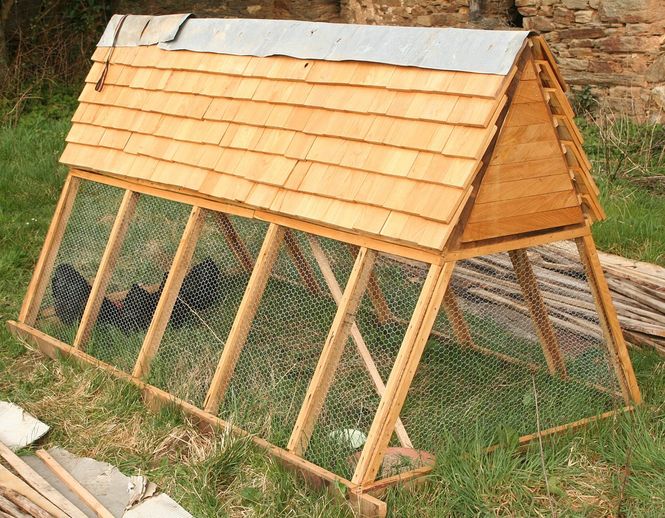How To Make A Chicken Coop That Will Stand The Test Of Time
If you have decided to build your own coop, make the necessary preparations to ensure that it truly lasts a long time. Having to patch up your work constantly can be tiring and you'd end up spending more in the long run or even decide to scrap the whole project and buy a coop.
Learning how to make a chicken coop can be quite intimidating, but with proper planning, a little woodworking skills and a whole lot of patience, you can definitely make the best home for your flock that can withstand the test of time.
Measure twice, cut once.
-- English Proverb
Table of Contents
Planning is Key

Just like with anything we do, we need to plan out everything. In this case, we first need to decide the location of your coop. Placing the coop in the right place, and making it big enough for your flock is essential. You wouldn't want to have a tiny coop for a large number of hens, and you also wouldn't want to place them in an area where they are vulnerable to predators or have no access to light and other basic necessities.
When building a coop, you need to make sure you have the following spaces appropriately sized for the number of hens you plan to keep. You need the following:
- Nesting Boxes
- Roosts
- Ladder/Ramp
- Watering Devices
- Feeders
- Run or Enclosure
These are the basic features you need to have in your coop. It's up to you how you implement these. Be creative and find out what works for you.

Compare And Contrast
If you are doing your own plans, it is great to base it off actual coop designs that you commonly see. This way you will know what you need and it will also give you an idea on how to apply certain features you want to see in your coop. You may also get fun and functional ideas from other farmers like how to keep your coop self-sustaining like harvesting rainwater, installing solar-powered lighting, self-replenishing feeders and more.

Don't Overdo It
It's nice to have everything in your coop but you wouldn't want to overdo it. Stick to the needs first, and then gradually add improvements should they become a necessity. This way it'll become obvious what can help make your flock's home more comfortable and how to make a chicken coop that will be easier for you to maintain.
Study, Write, Draw
Once you have listed out your requirements and figured out what you want to have in your coop. Study them, write them down, and finally draw out your design. Take your time, and be very patient. It's important to work on the details and make sure your measurements are precise. In addition to the actual design plans you also need to factor in costing. Set a budget and work within that budget. Remember, one of the main reasons you want to start building your own coop is to make it cost-effective.
Upcycle
How to make a chicken coop affordably
** **Using new pieces of wood and material is nice, but it would also be great if you could upcycle any scrap material you may have lying around -- it's cost-effective and very efficient.
When buying new material, be sure that you are purchasing good quality wood. Many people ask me 'how to build a chicken coop out of pallets', however choosing soft wood may be easy for you during the building phase but it may not last long with any kind of beating from the weather.
Ventilation
How to make a chicken coop
We cannot stress this enough. The most common mistake people make when learning how to make a chicken coop is not factoring in enough ventilation. People who skip this part in their design probably think that it is much better for their flock, especially in the winter, but this is where they are completely wrong. You need to have a vent on the lower part of your coop to allow cool air to enter, and vents on the top to allow hot air to escape. The ventilation is not only for managing the temperature in your coop, it is also important to prevent ammonia toxicity. When chickens produce waste, the ammonia from their droppings accumulate in the air. Without ventilation, the ammonia stays in the coop and will eventually kill your flock.
Weather Proofing
This is how to make a chicken coop that won't need constant maintenance
This is probably the most important step if you're looking to keep your coop for a long time. Different seasons and weather changes will affect your coop. You need to seal off the gaps where water may enter, add asphalt sheets to prolong the life of your roofing, and you can also coat your coop with liquid rubber or other sealants that will make your coop water-tight.

Building your own coop could appear a tedious job, but at the end of the day, seeing your own creation serving its purpose with function and style is very satisfying. Just be sure to follow our guide to make sure your coop can stand the test of time.